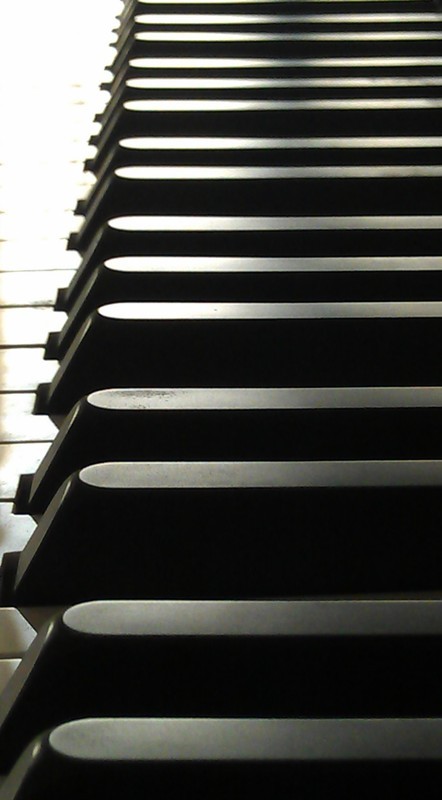Pianos + Players
918 posts
Quite Summery.
Quite summery.

Tags
-
 mokatai liked this · 1 year ago
mokatai liked this · 1 year ago -
 postcardcompendium reblogged this · 2 years ago
postcardcompendium reblogged this · 2 years ago -
 cecewhatsgood liked this · 10 years ago
cecewhatsgood liked this · 10 years ago -
 christinamirabilis reblogged this · 10 years ago
christinamirabilis reblogged this · 10 years ago -
 actiandii reblogged this · 11 years ago
actiandii reblogged this · 11 years ago -
 dnbdn reblogged this · 11 years ago
dnbdn reblogged this · 11 years ago -
 lucky-hippies liked this · 12 years ago
lucky-hippies liked this · 12 years ago -
 headphone-hedonist reblogged this · 12 years ago
headphone-hedonist reblogged this · 12 years ago -
 spiralingschwas reblogged this · 12 years ago
spiralingschwas reblogged this · 12 years ago -
 alicel0u reblogged this · 12 years ago
alicel0u reblogged this · 12 years ago -
 toomanyshotstotheheart reblogged this · 12 years ago
toomanyshotstotheheart reblogged this · 12 years ago -
 diemonds reblogged this · 12 years ago
diemonds reblogged this · 12 years ago -
 deterritorialization liked this · 12 years ago
deterritorialization liked this · 12 years ago -
 fallingd0wntherabbith0le reblogged this · 12 years ago
fallingd0wntherabbith0le reblogged this · 12 years ago -
 reetah-blog reblogged this · 12 years ago
reetah-blog reblogged this · 12 years ago -
 concoid reblogged this · 12 years ago
concoid reblogged this · 12 years ago -
 dasghboard liked this · 13 years ago
dasghboard liked this · 13 years ago -
 angelnumber444 liked this · 13 years ago
angelnumber444 liked this · 13 years ago -
 i-contain-multitudes reblogged this · 13 years ago
i-contain-multitudes reblogged this · 13 years ago -
 hiddenbungalow reblogged this · 13 years ago
hiddenbungalow reblogged this · 13 years ago -
 daysix reblogged this · 13 years ago
daysix reblogged this · 13 years ago -
 tiny-dots-on-an-endless-timeline liked this · 13 years ago
tiny-dots-on-an-endless-timeline liked this · 13 years ago -
 to-thedregs reblogged this · 13 years ago
to-thedregs reblogged this · 13 years ago -
 absurda-xx liked this · 13 years ago
absurda-xx liked this · 13 years ago -
 tulipseed-blog reblogged this · 13 years ago
tulipseed-blog reblogged this · 13 years ago -
 whitegirltraplord liked this · 13 years ago
whitegirltraplord liked this · 13 years ago -
 wond3rlust-blog reblogged this · 13 years ago
wond3rlust-blog reblogged this · 13 years ago -
 c54 liked this · 13 years ago
c54 liked this · 13 years ago -
 joycejamie-blog reblogged this · 13 years ago
joycejamie-blog reblogged this · 13 years ago -
 joycejamie-blog liked this · 13 years ago
joycejamie-blog liked this · 13 years ago -
 motormouthtestpilot liked this · 13 years ago
motormouthtestpilot liked this · 13 years ago -
 thefinalcoda reblogged this · 13 years ago
thefinalcoda reblogged this · 13 years ago -
 notpostinghereucanunfollow reblogged this · 13 years ago
notpostinghereucanunfollow reblogged this · 13 years ago -
 sandbox-love reblogged this · 13 years ago
sandbox-love reblogged this · 13 years ago -
 possumpaw reblogged this · 13 years ago
possumpaw reblogged this · 13 years ago
More Posts from Craigswanson
13 years ago
Element | qraig An oldie, from the 1988 vaults. Piano improvisation one evening in Los Angeles of long ago.
13 years ago
This would be a tremendous profile seated at a piano.
Even better: a long pause before starting to play the Berg op. 1 sonata.

Tags :
13 years ago
Always a beautiful day for a prelude...
robotcosmonaut:
Victory Day in Berlin

Tags :
13 years ago
“Without music, life would be a mistake.” [yeah well even with it it's a fuckin disaster]
Friedrich Nietzsche. (via orchideyes)
13 years ago
